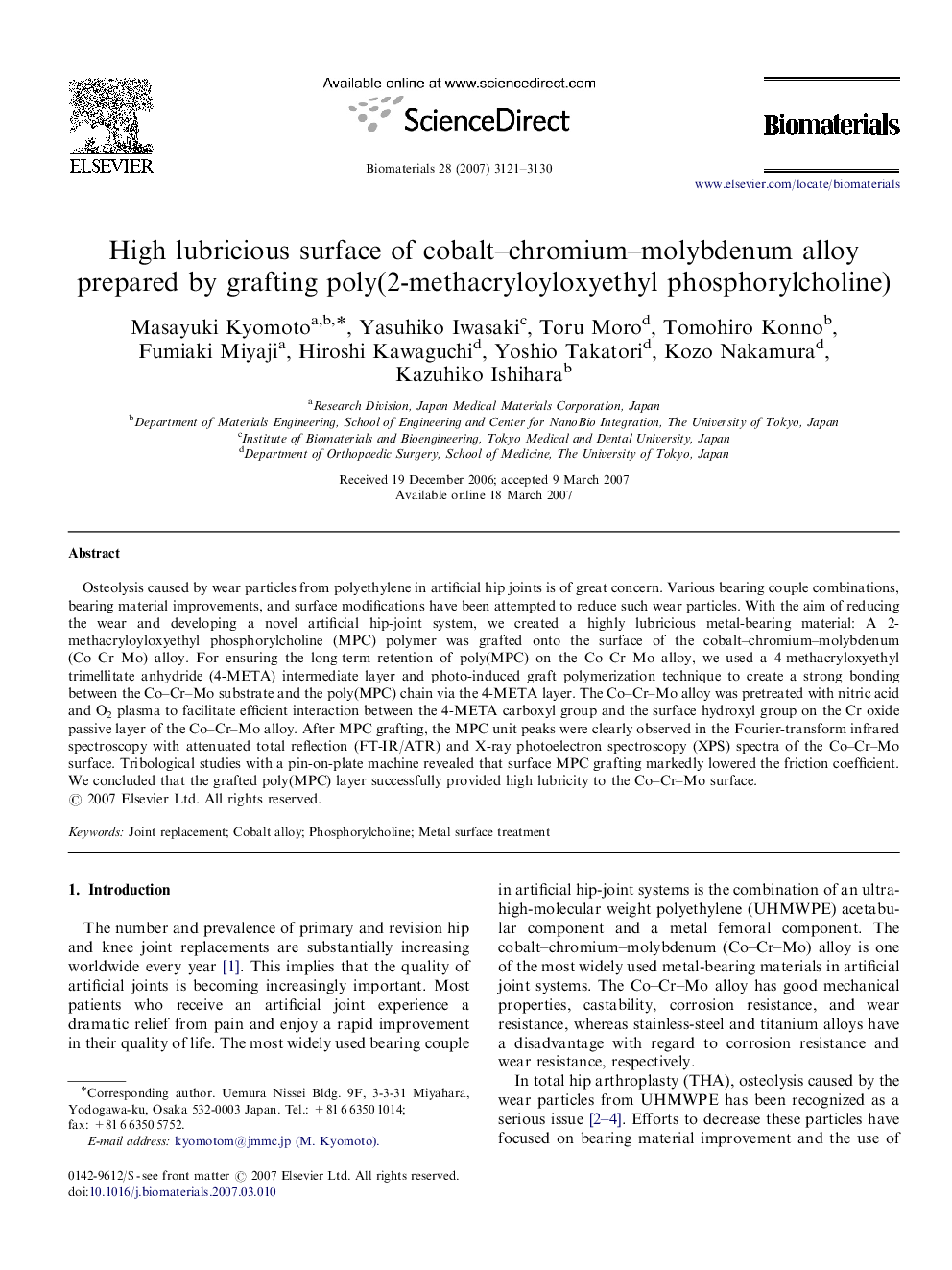| Article ID | Journal | Published Year | Pages | File Type |
|---|---|---|---|---|
| 10731 | Biomaterials | 2007 | 10 Pages |
Osteolysis caused by wear particles from polyethylene in artificial hip joints is of great concern. Various bearing couple combinations, bearing material improvements, and surface modifications have been attempted to reduce such wear particles. With the aim of reducing the wear and developing a novel artificial hip-joint system, we created a highly lubricious metal-bearing material: A 2-methacryloyloxyethyl phosphorylcholine (MPC) polymer was grafted onto the surface of the cobalt–chromium–molybdenum (Co–Cr–Mo) alloy. For ensuring the long-term retention of poly(MPC) on the Co–Cr–Mo alloy, we used a 4-methacryloxyethyl trimellitate anhydride (4-META) intermediate layer and photo-induced graft polymerization technique to create a strong bonding between the Co–Cr–Mo substrate and the poly(MPC) chain via the 4-META layer. The Co–Cr–Mo alloy was pretreated with nitric acid and O2 plasma to facilitate efficient interaction between the 4-META carboxyl group and the surface hydroxyl group on the Cr oxide passive layer of the Co–Cr–Mo alloy. After MPC grafting, the MPC unit peaks were clearly observed in the Fourier-transform infrared spectroscopy with attenuated total reflection (FT-IR/ATR) and X-ray photoelectron spectroscopy (XPS) spectra of the Co–Cr–Mo surface. Tribological studies with a pin-on-plate machine revealed that surface MPC grafting markedly lowered the friction coefficient. We concluded that the grafted poly(MPC) layer successfully provided high lubricity to the Co–Cr–Mo surface.
